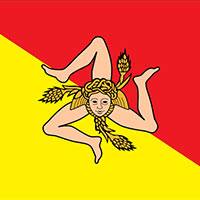Sicilian Sites on the UNESCO World Heritage List
Sicilian Sites on UNESCO's World Heritage List
- Agrigento: Archaeological Area of Agrigento (UNESCO)
- Aeolian Islands: Isole Eolie. The group consists of seven islands (Lipari, Vulcano, Salina, Stromboli, Filicudi, Alicudi and Panarea) and five small islets (Basiluzzo, Dattilo, Lisca Nera, Bottaro and Lisca Bianca) in the vicinity of Panarea. (UNESCO)
- Caltagirone (UNESCO)
- Catania (UNESCO)
- Cefalù Cathedral
- Militello Val di Catania (UNESCO)
- Modica (UNESCO)
- Monreale Cathedral
- Mount Etna (UNESCO)
- Noto (UNESCO)
- Palermo: Palazzo dei Normanni (The Norman Palace)
- Palermo: Cappella Palatina (The Palatine Chapel in the Norman Palace)
- Palermo: Church of San Giovanni degli Eremiti
- Palermo: Church of Santa Maria dell'Ammiraglio (also known as the Martorana)
- Palermo: Church of San Cataldo
- Palermo: Cathedral of Palermo
- Palermo: The Zisa Palace (La Zisa)
- Palermo: The Cuba Palace (La Cuba)
- Palazzolo Acreide (UNESCO)
- Ragusa (UNESCO)
- Scicli (UNESCO)
- Syracuse and the Rocky Necropolis of Pantalica (UNESCO)
San Cataldo
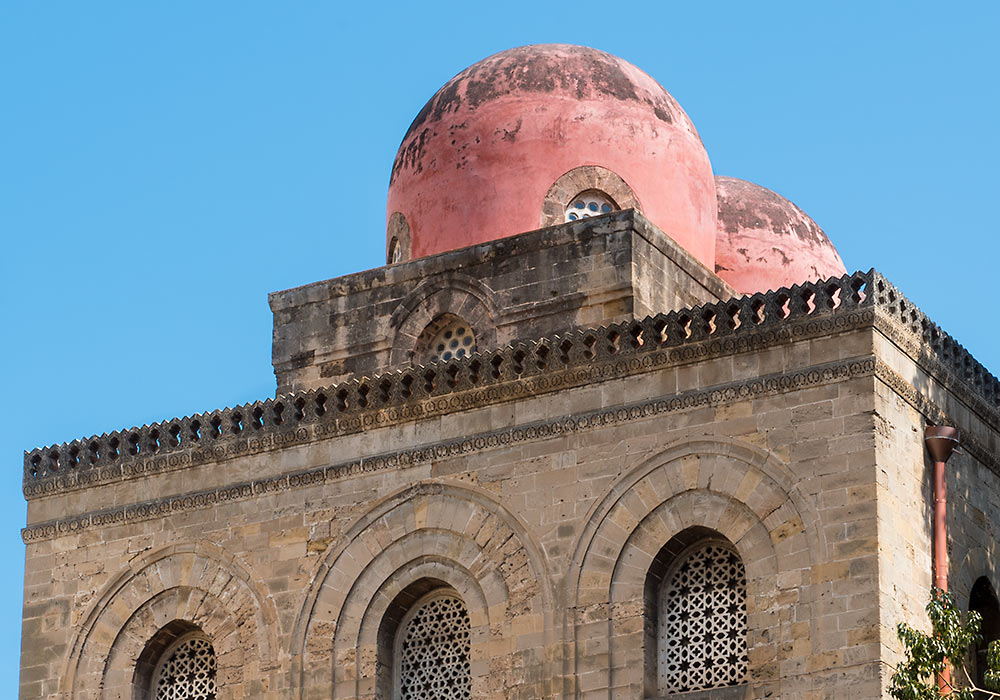
The Church of San Cataldo (Chiesa di San Cataldo), an example of the wonderful Arabian-Norman architecture. San Cataldo is one of the sites in Palermo inscribed on the UNESCO World Heritage List. San Cataldo was founded by William I's chancellor, Maio of Bari c. 1160. In that year, Maio was assassinated with the result that San Cataldo's interior never was decorated. After 1787 the church served as a post office (!), before it was restored in 1885.
La Martorana (Santa Maria dell'Ammiraglio)
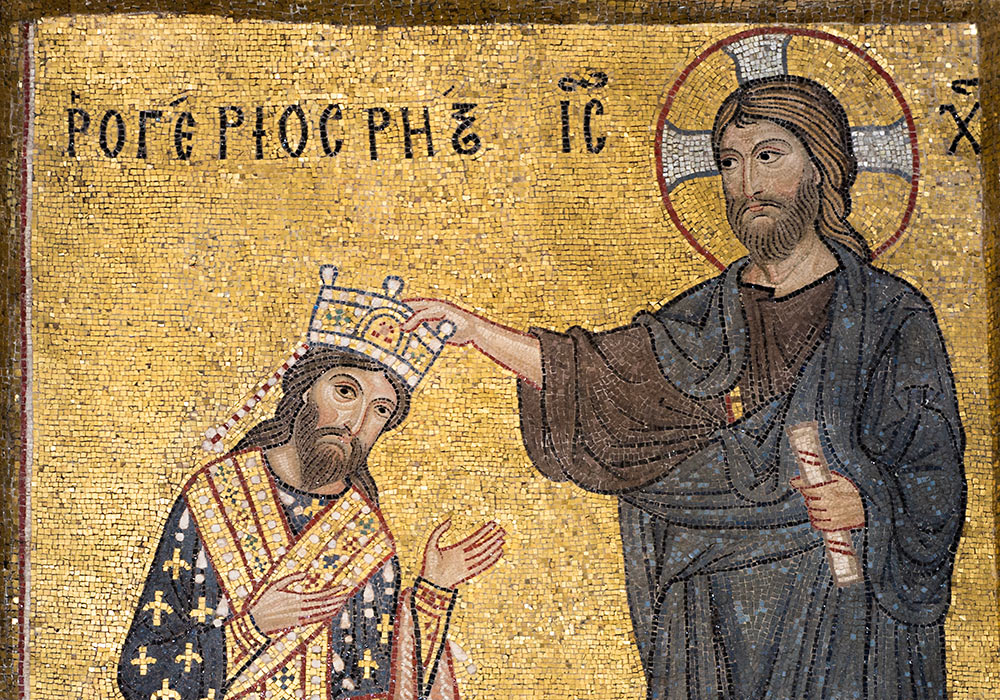
Roger II receiving the crown directly from Christ and not the Pope. Mosaic in the Martorana, Palermo. The mosaic carries an inscription Rogerios Rex in Greek letters. After the Sicilian Vespers of 1282 the island's nobility gathered in the church for a meeting that resulted in the Sicilian crown being offered to Peter III of Aragon.
Photo: Per-Erik Skramstad / Wonders of Sicily
La Zisa
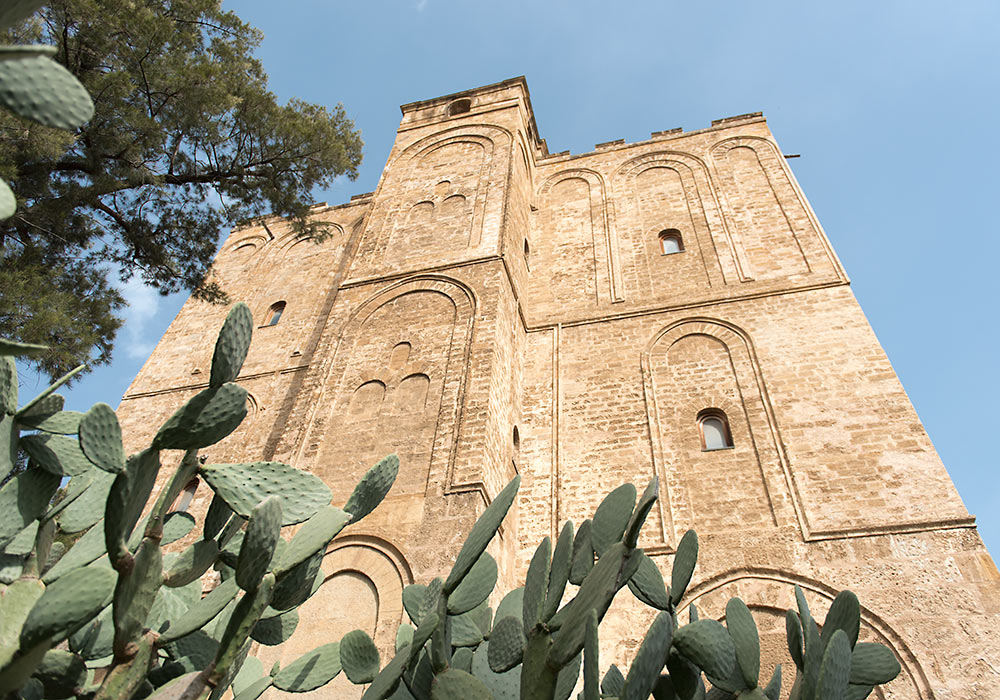
Photo: Per-Erik Skramstad / Wonders of Sicily
Cappella Palatina
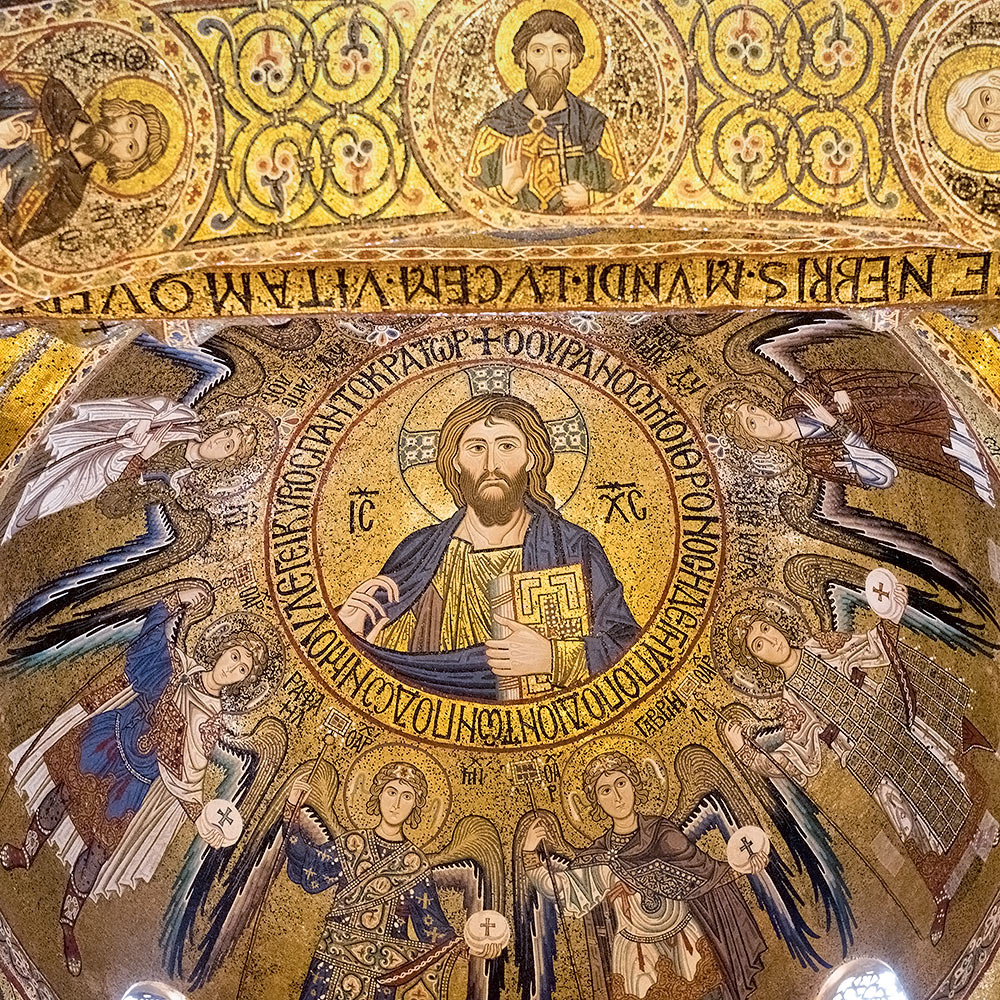
The Palatine Chapel in Palermo (Cappella Palatina)
Photo: Per-Erik Skramstad / Wonders of Sicily
San Giovanni degli Eremiti
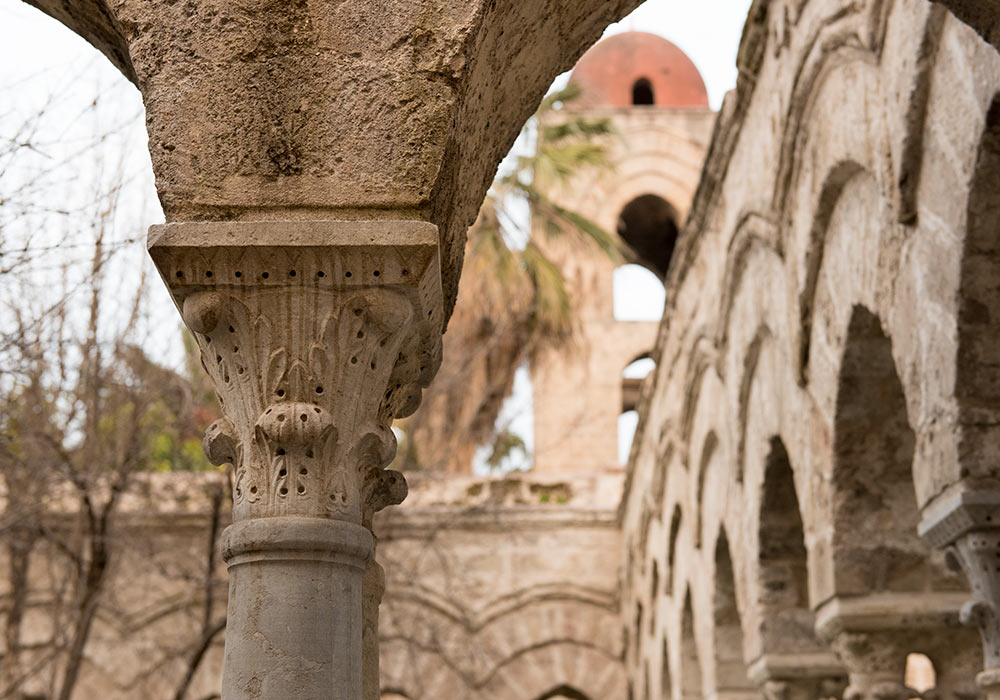
Cloister at San Giovanni degli Eremiti.
Photo: Per-Erik Skramstad / Wonders of Sicily
Palermo Cathedral
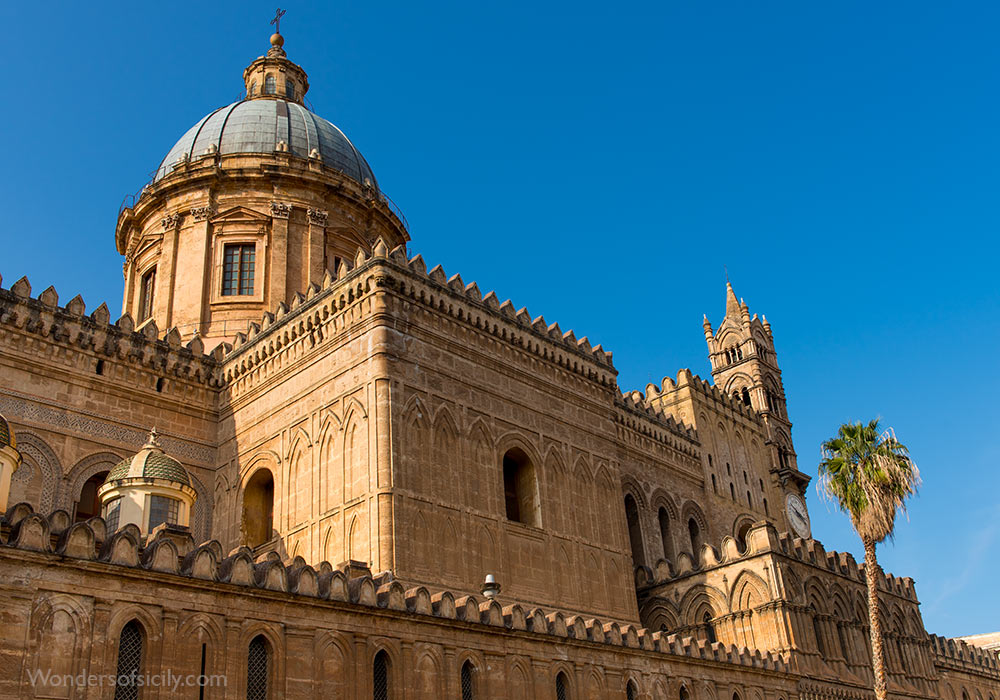
Palermo Cathedral.
Photo: Per-Erik Skramstad / Wonders of Sicily
Ragusa
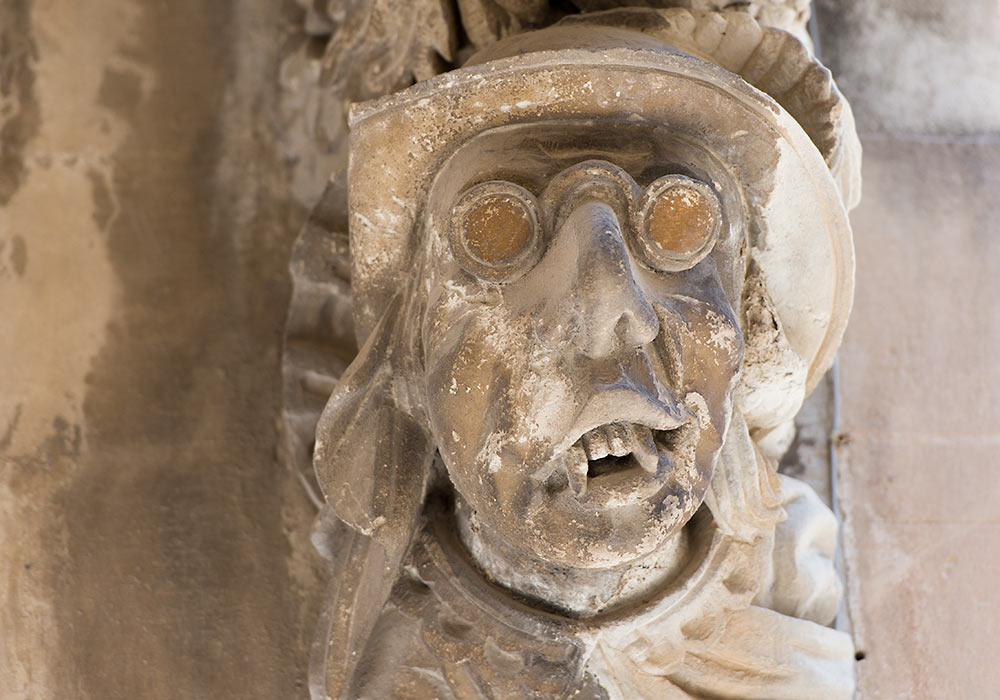
Decoration under a balcony on Palazzo la Rocca in Ragusa: Man with glasses and facial nerve paralysis. Ragusa contains nine major churches and seven major palazzi, all Baroque.
Photo: Per-Erik Skramstad / Wonders of Sicily
Justification for Inscription Criterion (i): This group of towns in south-eastern Sicily provides outstanding testimony to the exuberant genius of late Baroque art and architecture. Criterion (ii): The towns of the Val di Noto represent the culmination and final flowering of Baroque art in Europe. Criterion (iv): The exceptional quality of the late Baroque art and architecture in the Val di Noto lies in its geographical and chronological homogeneity, as well as its quantity, the result of the 1693 earthquake in this region. Criterion (v): The eight towns of south-eastern Sicily that make up this nomination, which are characteristic of the settlement pattern and urban form of this region, are permanently at risk from earthquakes and eruptions of Mount Etna.
Modica
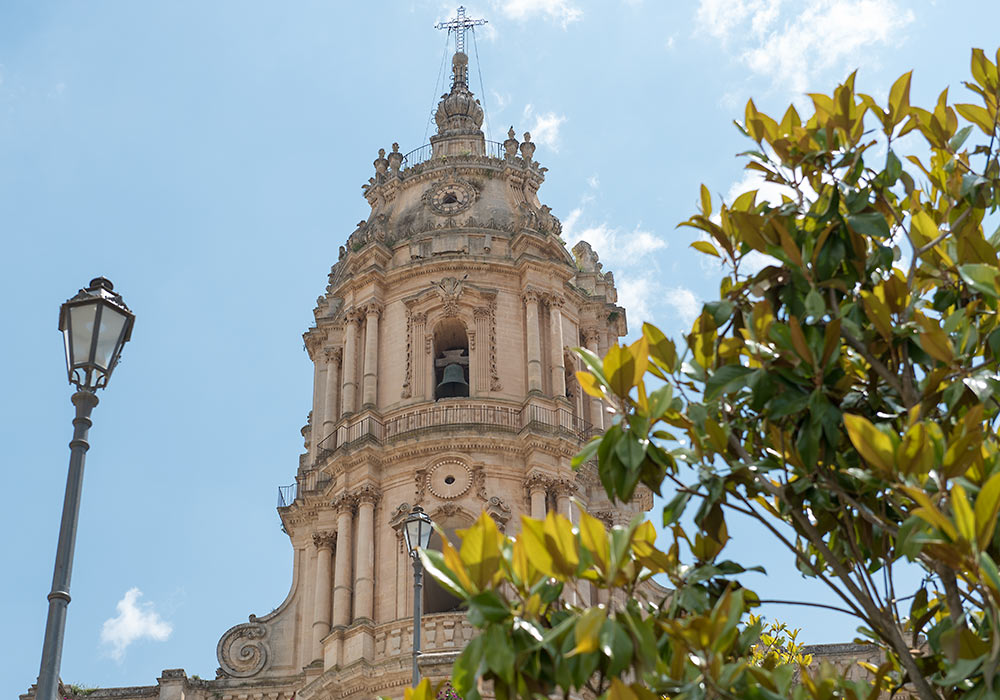
The Duomo (Cathedral) in Modica
Photo: Per-Erik Skramstad / Wonders of Sicily
Agrigento
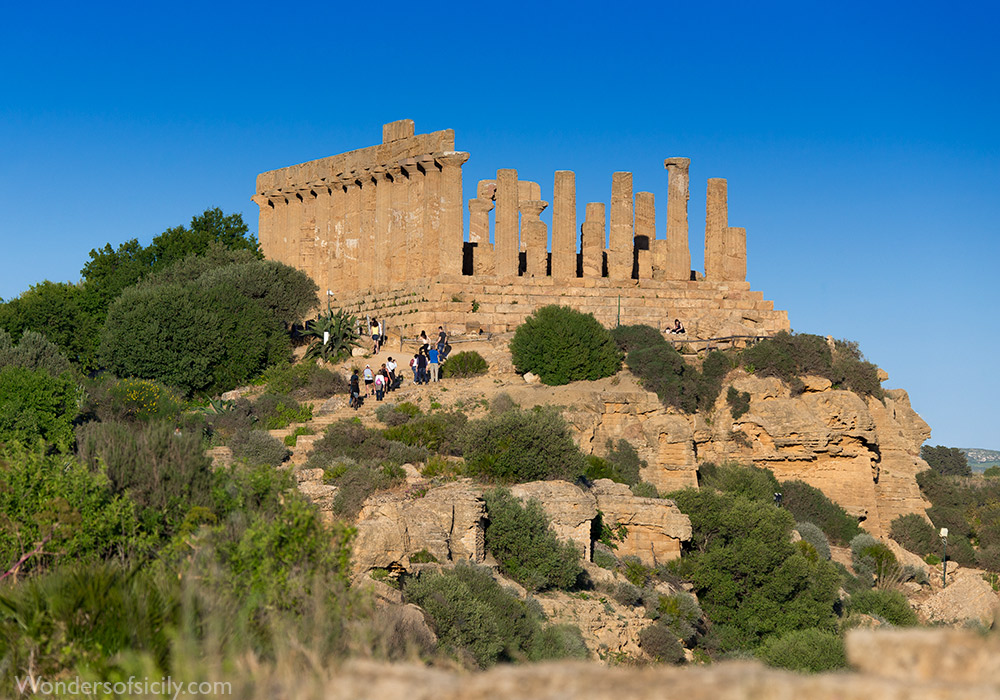
Temple of Hera, Agrigento.
Photo: Per-Erik Skramstad / Wonders of Sicily
UNESCO's justification for inscription: "The Committee decided to inscribe this site on the basis of criteria (i), (ii), (iii) and (iv), considering that Agrigento was one of the greatest cities of the ancient Mediterranean world, and it has been preserved in an exceptionally intact condition. Its great row of Doric temples is one of the most outstanding monuments of Greek art and culture."
Maps of Sicily
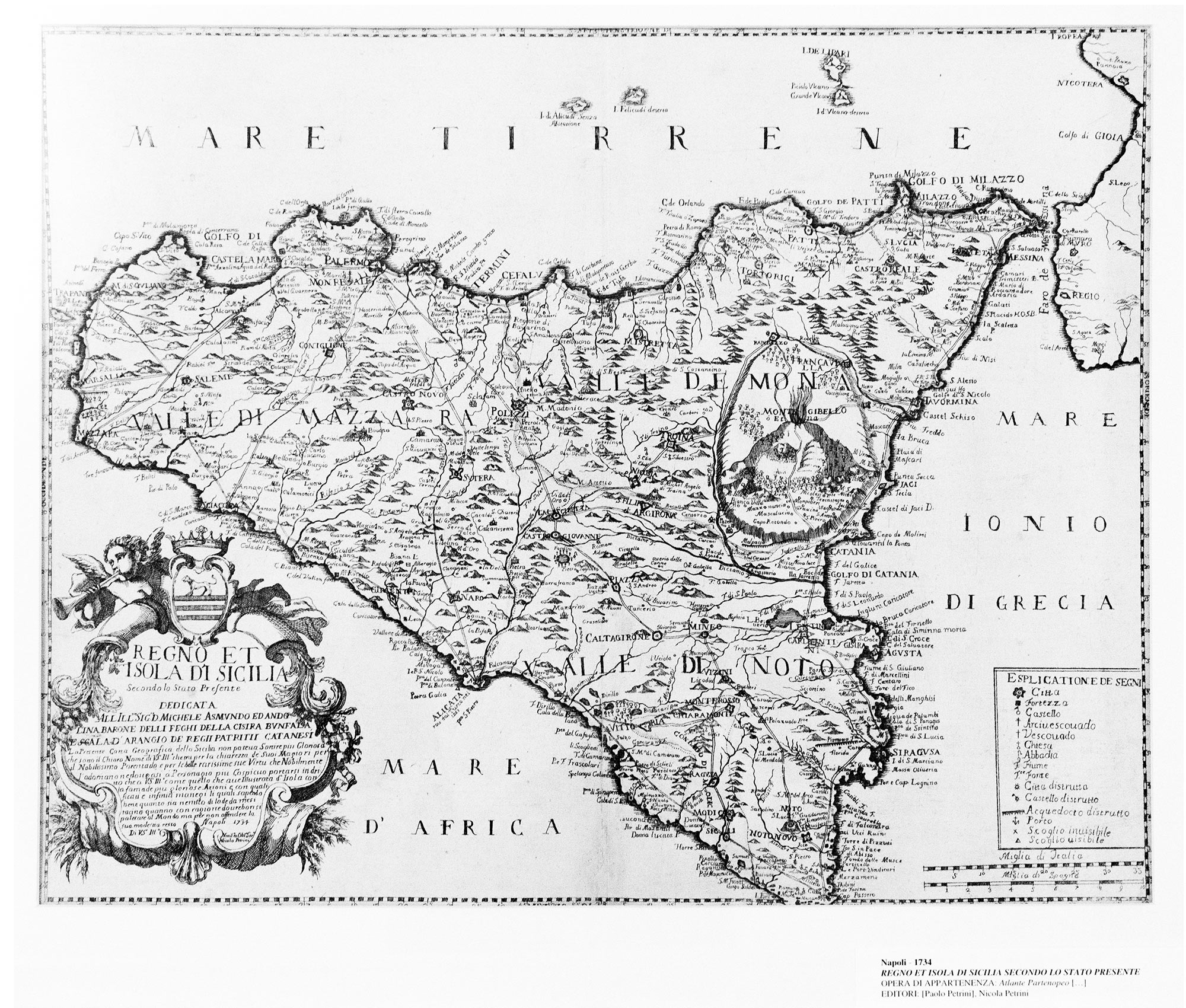
Map of Sicily anno 1734.
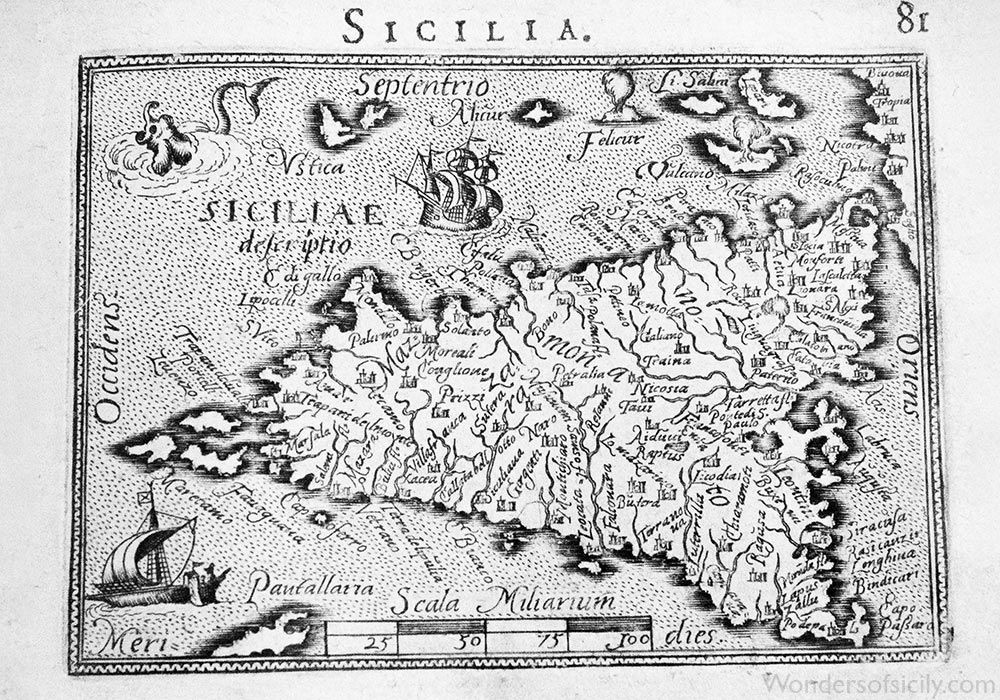
Map of Sicily anno 1589.
Acireale - Agrigento - Castelbuono - Catania - Cefalù - Enna - Erice - Modica - Monreale - Noto - Palermo - Ragusa Ibla - Segesta - Selinunte - Taormina - Syracuse (Siracusa) - Trapani -
Alesa Arconidea - Aleister Crowley in Cefalù - Bagheria - Balconies in Sicily - Baron Wilhelm von Gloeden - Baroque architecture in Sicily - Birds in Sicily - Caccamo - cars in Sicily - Castelmola - Cats in Italy - Collesano - Death in Sicily - Death in Sardinia - Entella - Film locations in Sicily - Fish, fishermen and fish markets in Sicily - Gela - Gibilmanna - Greeks in Sicily - Halaesa Arconidea - insects in Sicily - Linguaglossa - Lizards in Sicily - Maps of Sicily - Monreale Cathedral - Monreale Cloister - Life in Sicily - Mosaics in Sicily - Mount Etna - Museums and Exhibitions - Normans in Sicily - Palermo: Museum of the Holy Inquisition - Palermo: the Norman Palace - Palermo: Oratorio del SS. Rosario, San Domenico - Palermo: the Palatine Chapel (Cappella Palatina) - Palermo: Richard Wagner in Sicily - Palermo: La Zisa - Palermo: Chiesa Santa Maria della Catena (Church of Saint Mary of the Chain) - Syracuse: The Archeological Park - Tommaso Fazello - Tuna fishing in Sicily (La Mattanza) - Videos - Villa Palagonia (Bagheria) "The Villa of Monsters" (Villa dei Mostri) - Villa Romana del Casale (near Piazza Armerina) - Sicily in Art - Sicilian Art and Artists - The White Lotus season 2 locations in Sicily -

